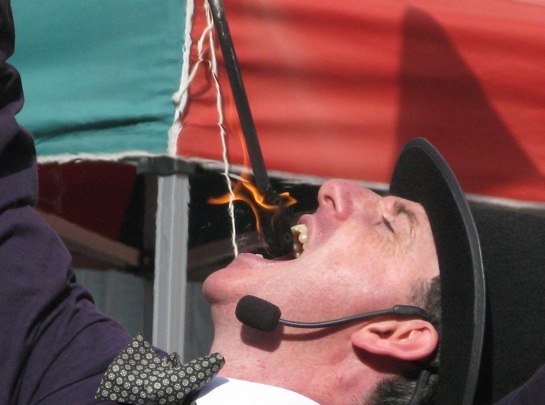LONDON CRISIS THE CITY RISK STREETS REGENERATION EAST LONDON Contact LI


Many London-based investment and ‘High Street’ retail banks began to expose investors’ money and their own financial stability between 2000-07, writes Paul Coleman.
London banks positioned themselves at the heart of a new ‘transatlantic’ model of finance capital - ‘securitisation’ – an international market where American mortgages and credit, car and student loans were bundled into financial products to be widely sold, speculated and insured.
A heated market for these bundled ‘synthetic’ Collateralised Debt Obligations (CDOs), chiefly created by investment banks, encouraged lending agencies to offer incentives to mortgage brokers. In turn, brokers persuaded lower income American borrowers to accept risky high interest ‘subprime’ loans.
Bundled risk
Such lending to people at greater risk of default was later decried as ‘predatory lending’. But few in the ‘securitisation’ chain cared about the sustainability of these loans during 2000-07. Borrowers were lent money to buy their homes even if they were unlikely to be able to repay. Brokers and lenders got their fees and bonuses for selling high interest loans.
Top investment and ‘High Street’ bankers gained higher salaries and huge cash bonuses for selling and insuring CDO bundled loans. Bankers’ personal wealth rose dramatically.
Annual mortgage lending quadrupled between 2003-06 but most loans were ‘subprime’ high interest mortgages to people at greater risk of default. Subprime lending increased from $30 billion annually to over $600bn between 1996 and 2006.
Lehman Brothers and AIG
Overheating American house prices fuelled by risky subprime lending increased the exposure to risk of London-based investment and ‘High Street’ banks. For instance, Lehman Brothers, a major investment bank with a significant London Canary Wharf operation, underwrote a large proportion of subprime lending and CDO investments.
Banks and finance companies also invested in Credit Default Swaps, insurance bets that pay out when somebody else goes bust. American International Group, at the time the world’s largest insurer, had traded for decades on its ‘gold-plated’ AAA-rated size, stability and safety. But between 2000-07 AIG sold vast amounts of derivative credit protection in the form of Credit Default Swaps on high-risk Collateralised Debt Obligations.
In London’s expensive West End district of Mayfair, AIG’s Financial Products Division issued $500 billion of CDS, many of them for CDOs based on high-risk subprime US mortgages. CDO investors used CDSs like an insurance policy, paying AIG a quarterly premium. If the CDO turned ‘bad’ or ‘toxic’, AIG promised to pay the investors’ CDO losses.
Bonus culture
Generally, bank traders felt they could personally reap bonuses worth tens of thousands per year if they simply used investors’ money to trade in risky CDOs and CDSs.
AIG(FP) in London sold unregulated CDSs to other speculators to increase short-term profits. AIG paid employees huge bonuses for securing contracts. Some 400 AIG(FP) employees made $3.5 billion between 2000-07. AIG(FP) head Joseph Cassano personally made $315 million.
AIG auditor Joseph St. Denis resigned in 2007 in frustration after AIG(FP) blocked his attempt to investigate their accounts.

Leverage
Banks also borrowed heavily to create more CDOs and buy more loans books. Leverage – the legally required ratio between the banks’ own money and their borrowings – was allowed to increase up to 1 to 30 between 2003-07. A slight fall in a bank’s real asset value could trigger that institution’s market collapse.
Overheating 2006-07
But London and other global market bankers rushed into derivatives in 2006-07. The digitally driven CDS market alone had already mushroomed from nearly $1 trillion in 1998 to $58 trillion in 2008. Goldman Sachs sold at least $3.1 billion worth of CDOs in the first half of 2006.
In June 2006, total global derivative investments stood at $370 trillion. By December 2007, the world derivatives market had stormed upwards of $596 trillion.
This compared in value to global Gross Domestic Product at about $65 trillion and to the $63 trillion value of all companies quoted on world stock markets. Currency trading reached $1,168 trillion.
Meltdown prospect
Thousands of lower income Americans faced mortgage foreclosure and the loss of their new homes if the sloshing CDO and CDS derivative markets failed. But politicians, central bankers and regulators ignored expert warnings about the threat securitisation posed to the very survival of global investment and retail banks.
Politicians and financial media did not seriously consider the prospect of a London and New York banking and financial meltdown. The savings, incomes, jobs and life chances of New Yorkers, Londoners and billions of people across the world were now at risk.
© Paul Coleman, London Intelligence, 2012
Words and Photos © LONDON INTELLIGENCE 2012
